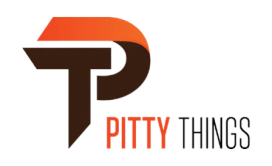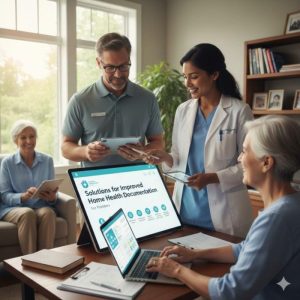Accurate and comprehensive home health documentation is pivotal in providing high-quality patient care. It serves as the foundation for patient management, continuity of care, billing practices, and legal protection for healthcare providers. With the advent of technological solutions, there’s no better time than now to explore ways to enhance home health documentation. Below, we delve into practical strategies and tools that providers can leverage to ensure they maintain precise and efficient records.
Implementing Standardized Documentation Protocols to Improve Compliance and Quality Care
The implementation of standardized documentation protocols is key to achieving consistency in home health care reporting. By following set guidelines, providers are more likely to capture all the necessary information in a structured manner. This uniformity not only aids in compliance but also facilitates quality improvement by enabling easier review and analysis of care patterns.
Standard protocols also ease the transition of care between providers, ensuring every team member is informed about the patient’s status and care plan. Such consistency is particularly important in home health settings, where various professionals may attend to a patient. These protocols can be integrated into EHR systems to prompt providers to complete essential fields, reducing the likelihood of omissions.
To effectively implement standardized protocols, leadership must actively promote their importance and provide the necessary resources for their adoption. This may include integrating tools like iO Assist: Home Health Documentation into everyday practice. Such assistive technologies can guide providers through the documentation process, ensuring that records are comprehensive, accurate, and useful for patient care.
Leveraging Electronic Health Records (EHRs) for Enhanced Home Care Reporting
have revolutionized medical documentation by making it easier to create, store, and retrieve patient information. EHRs offer a range of tools for home health providers to accurately record patient encounters, thus reducing the risk of documentation errors. The real-time nature of EHRs ensures that patient data is always current, promoting more informed decision-making in home care settings.
EHRs also facilitate the legal requirement of maintaining detailed medical records. By standardizing the way patient information is recorded, providers can comply with healthcare regulations more consistently. The use of EHRs can also streamline the sharing of patient information between different healthcare providers and specialists, which is particularly important in a home health setting where collaboration is key.
The integration of decision support tools within EHRs can also assist providers in following best practice protocols and guidelines. This leads to improved patient care and can prevent adverse health events. Furthermore, many EHR systems now offer patient portals, which allow patients to access their health records, ask questions, and schedule appointments, thereby fostering transparency and.
Streamlining Documentation With Mobile Health Technology Solutions
Mobile health technologies offer groundbreaking solutions for streamlining the documentation process in home health care. With secure mobile apps, providers can update patient records on the go, allowing for more efficient home visits and immediate data entry. Patient information becomes readily available, which is pivotal for making timely care decisions.
Incorporating mobile document-scanning features can also facilitate capturing and attaching supporting documents to the patient’s electronic file. This integration of multimedia resources ensures that the entirety of a patient’s health information is consolidated and easily accessible. Providers can remain focused on delivering care rather than managing paperwork by using intuitive interfaces on tablets and smartphones.
Training and Continuing Education for Home Health Providers
As documentation practices evolve with technology, ongoing training and education for home health providers become increasingly important. Such training ensures that providers are equipped with the latest skills and knowledge to maintain proper documentation. Continuous learning opportunities also help providers stay abreast of changing regulations and compliance requirements.
Effective training programs should include both the technical aspects of documentation—like navigating EHR systems or mobile apps and the principles of good documentation practices, which encompass knowing what information needs to be recorded and why. This comprehensive approach helps in minimizing errors and enhancing the quality of patient reports. Overall, the implementation of sophisticated documentation strategies in home health care is essential for enhancing patient care and ensuring compliance with healthcare regulations. Practices that integrate EHRs, leverage mobile technology, emphasize training, and adopt standardized documentation protocols are better positioned to provide quality care. It is these efforts that ultimately lead to healthier patient outcomes and a more efficient healthcare delivery system.






